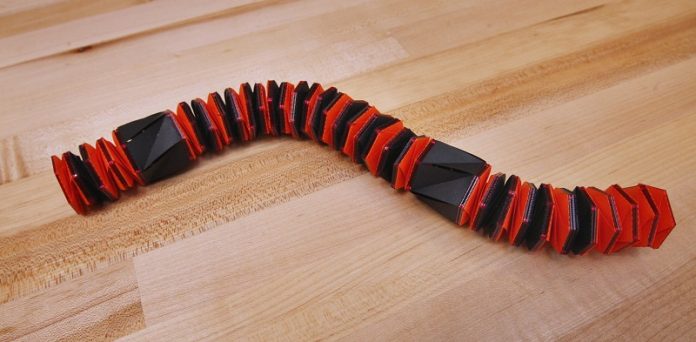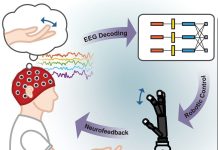
Engineers from Princeton and North Carolina State University have developed a unique caterpillar-shaped robot that cleverly uses origami-inspired techniques to move, carry objects, and change shape.
This innovation promises to redefine how soft robots function, blending ancient paper-folding art with cutting-edge science.
Soft robots are known for their flexibility, which makes them ideal for navigating through tight spaces.
However, incorporating steering mechanisms often makes these robots stiffer and less flexible.
The new robot design tackles this issue by integrating the steering system right into the robot’s structure, enhancing both its flexibility and control.
This robot is constructed from cylindrical segments that resemble the sections of a caterpillar. These segments are special because they can work independently or connect to form a longer robot.
This modular design not only lets the robot move and steer with ease but also allows it to perform tasks like picking up and carrying items.
“The beauty of modular soft robots is their potential to evolve,” said the researchers in their study published in the Proceedings of the National Academy of Sciences. They believe these robots could lead to future designs where robots grow, heal themselves, and develop new capabilities.
Each robot segment can act on its own or work together as a team. “These segments can detach and reattach on the go, communicating with each other to form a single unit or operate as a swarm,” explained Tuo Zhao, a postdoctoral researcher at Princeton. The segments are connected using magnets, making assembly and disassembly smooth and straightforward.
The researchers used a special origami pattern called Kresling to give each segment the ability to twist and turn. This pattern allows the segments to flatten into disks and then pop back into cylinders, a movement essential for the robot’s crawling and steering abilities. By making small adjustments to how these segments bend, the robot can change direction as it moves forward.
One of the biggest challenges was developing a method to control these movements accurately. The team achieved this by using a combination of materials that expand and contract at different rates when heated.
They embedded a thin, stretchable heater made from a silver nanowire network into the robot’s folds. When an electric current passes through the heater, it causes the robot to bend and fold precisely, enabling it to steer and move.
“Silver nanowire is an excellent choice for creating stretchable conductors, which are essential for building a variety of electronic devices,” noted Yong Zhu, a professor involved in the research. “In this robot, it allows us to achieve sharp, localized folding that activates the origami pattern, enabling precise control over the robot’s movements.”
While the current version of the robot moves slowly, the researchers are optimistic about its future. They plan to explore various shapes and patterns to improve the robot’s speed and maneuverability.
This development opens up exciting possibilities for soft robotics, suggesting a future where robots are not only helpers but can also adapt and recover from damage much like living organisms.
Source: Princeton University.



